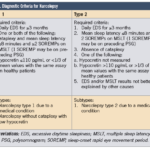These tips on how to deal with Transverse Myelitis are from a young girl. Sarah Todd was suddenly afflicted with the paralysis and pain that accompanies this neurological disorder when she was only 8 years old.
Sarah and her friend Jen Starzec – who was diagnosed with Transverse Myelitis as a teenager– wrote a book about their journey. Jen is every bit as amazing, positive, smart, and upbeat as Sarah! I recentlywrote about Jen here on New Beginnings (the link to her article is after Sarah’s tips on how to deal with Transverse Myelitis).
They wrote 5K, Ballet, and a Spinal Cord Injury. “We are very happy with its success and the number of books we have sold, and the amount of money we have raised for the Transverse Myelitis Association (1/3 of all book profits go towards it),” they say. “Also, we are very proud to be published authors at such young ages!” Their official website is www.5kballet.com , and their Facebook page is the title of the book.
Sarah amazes me – she is so positive, upbeat, and cheerful despite having been diagnosed with Transverse Myelitis at such a young age! This is how this neurological disorder first affected her: “I noticed my arms slowing down, and then they stopped,” says Sarah. “I couldn’t move them at all. They were completely paralyzed.”
Here, Sarah describes how she dealt with Transverse Myelitis, which is a neurological disorder that affects the spine. If you know someone who recently had surgery for transverse myelitis, read 10 Gifts for Back Surgery Patients.
Dealing With Transverse Myelitis
This is Sarah’s story of being diagnosed and dealing with Transverse Myelitis, in her own words.
I was 8 years old when I got Transverse Myelitis. About a month before, I had an ordinary stomach bug that lasted about two days. A few days before I was diagnosed with a spinal cord injury, I felt really fatigued while on a walk with my parents. After one long day of a piano recital and baseball game, my back hurt really badly. On April 19th, 2010 I went to dance class after school like any other day. I loved dancing, and had been doing it since I was about three. During dance class I got a really painful headache, and it was so bad that I started crying. My dance teacher went and got my mom, and she was going to bring my home to lie down and rest. We went outside the classroom to get our things and put some clothes on over my leotard and tights.
The paralysis set in. I noticed my arms slowing down, and then they stopped, and I couldn’t move them at all. They were completely paralyzed. My mom brought me to the Emergency Room, which I was at for six hours before the doctor just sent me home. The next morning I woke up and realized I couldn’t move my legs, either. I was completely paralyzed from the neck down.
Treatments for Transverse Myelitis. The doctors tried to treat me with steroids first, and when that didn’t work they gave me five days of plasmapheresis, which helped a lot. The most difficult part of this neurological disorder is been not knowing how much better I’m going to get, and if I’ll ever be back where I was before again. Also, it’s difficult to think about what my life will be like as an adult.
One of the biggest surprises of Transverse Myelitis has been having to travel across the nation to see different doctors. I’ve been to Johns Hopkins Medical Center in Baltimore, Maryland six times, the Mayo Clinic in Rochester, Minnesota once, Shiners hospital for children in Philadelphia, Pennsylvania twice, and Shiners Hospital for Children in Greenville, South Carolina three times.
One of the most unexpected problems has been school. My school years since this spinal cord injury have not been what I expected them to be! I had to have a home-bound tutor in third grade that came to my house twice a week to teach me, and have had a full-time aid every year since. My aid helps me do things I cannot do on my own, such as carrying my things to each class and opening my locker.
I am also no longer able to dance at my old company. I have dealt with not being able to perform dances by dancing on my own to videos and choreographing my own dances to different songs. Also, I have joined chorus at school so I can still be performing.
A Day in the Life of a Girl With Transverse Myelitis

Jen Starzec and Sarah Todd, with their book
A typical weekday in my life starts with waking up in the morning, and getting dressed without much help (I didn’t used to be able to get dressed on my own with this spinal cord injury). Then I brush my teeth, and I am able to do that on my own too. I have a special toothpaste dispenser we found where I just need to push a button for the toothpaste to come out. My mom drives me to school, and I go to Talented and Gifted Social Studies first period. Then second period I have Earth Science, then Homeroom and lunch, then Spanish, then Advanced Math, then TAG Language Arts, then Home Economics, and then Chorus. Then my mom brings me home, and I have time to eat, rest, do homework, and FaceTime Jen. Then I go to bed, and it starts all over again the next day!
The best parts of my day are when I’m in Spanish, Chorus, and Social Studies, which are my favorite classes. My least favorite part of the school day is people staring at me because of my aid, and having to explain to people why I have her and why I need help with many things. On weekends, I sleep in, then hang out with friends. That’s my ideal day! On Sundays, though, I have two hours of therapy in the middle of the day.
Tips on How to Deal With Transverse Myelitis
My advice for others diagnosed with a neurological disorder or spinal cord injury is:
- Stay positive
- Put things into a good perspective
- Persevere
Also – my family has been a big help getting through everything, and so have the friends I have met along the way. Raising awareness about Transverse Myelitis and turning my diagnosis into something positive by writing a book has also been a big help!
Here is a YouTube video of my story: Sarah Todd’s Story of Transverse Myelitis.
I was introduced to Jennifer Starzec, who also has Transverse Myelitis, on Facebook, and our moms got to know each other. They got us together at Johns Hopkins in Baltimore, and we eventually became more like sisters than friends. Shortly after that Baltimore trip we got the idea to write a book about our experiences.
To learn tips on how to deal with Transverse Myelitis from Jen, read How Jen Recovered From a Spinal Cord Injury.
And, here’s another story of hope and new beginnings after a devastating health diagnosis: Hypothyroidism Treatment – How Sara Survived Hashimoto’s Thyroiditis.





